
Mango is commercially grown in more than 90 countries world wide and is consumed both in fresh or processed form.Mango is known as the king fruit of India.About 1600 varieties are registered in the world, of which about 1200 exist in India alone. India is a leading producer of mango in the world.About 2 dozen varieties are grown commercially in different parts of India.Dashehari, LangraandChausaAlphonso, Kesar, Rajapuri Baneshan/Bagganpalli, Neelum, Totapuri Zardalu, Langra, Malbhog The role of PHM is important for reduction of post harvest losses of fruits and vegetables and to make them available for longer period in the market
Techniques of Fruit Preservation
Low temperature preservation
Thermal processing
Removal of water
Irradiation
Carbonation
Preservation by high sugar and acid
Addition of chemical preservatives
Fermentation
Pickling
High hydrostatic pressures
Hurdle technology
Mango fruits have been utilised for long time as fresh as well as its products like pickle, nectar, squash, Pickles are good appetizers and add to the palatability of a meal. They stimulate the flow of gastric juice and thus help in digestion.
Green or ripe mangoes can be processed and value added into various products as follows:-
1. Green Mangoes / Raw Mango Products
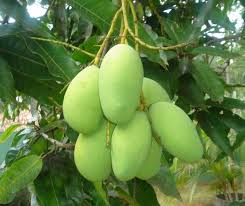
1. Pickles
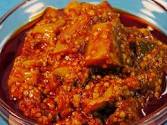
The preservation of food in common salt or in vinegar is known as pickling. It is one of the most ancient methods of preserving fruits and vegetables. Pickles are good appetizers and add to the palatability of a meal. They stimulate the flow of gastric juice and thus help in digestion. They are prepared with salt, vinegar, oil or with a mixture of salt, oil, spices and vinegar
FPO Specifications for Pickle
Minimum percentage of salt (w/v) should be 12 %
Pickles should be free from added copper, alum, mineral acids or preservatives
Should be free from fungal or insect attack or any type of rot
Preserves
Desserts
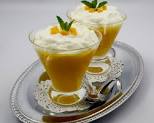
It is a product prepared by cooking the fruit pulp with added salt, sugar, spices, acetic acid and/ or dry fruits to a suitable consistency. Sugar, salt, spices, acetic acid all act as partial preservatives
FPO Specifications for Chutney
Minimum percentage of total soluble solids in final product (w/w) should be 50 %
Acidity should not be more than 2.1 %
Should have no sign of fermentation when incubated at 28-30ºC and 37ºC.
5. Green powder
Green powder is produced from juice of green mangoes and dried through the process of spray drying. It has an aroma and flavor of fresh green mango, which is great for instant mango juice/shake and as soup base or broth.
6. Mango flakes
Mango flakes are considered a healthy snack. It is drum dried with or without starch. It can be used as ingredient or flavoring material to cereal, pie filling, yogurt, fruit bars, cakes, sauces, juices and pastries.
7. Mango square
Mango square is a bakery product made from a flour margarine based dough and mango paste as filling. The mango paste is formulated from table ripe mango and sugar. It is a nutritious snack and desert item.
8. Amchur (Raw Mango Powder)
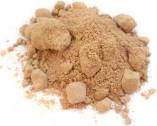
Amchur has a tart, acidic, fruity flavour that adds character to many dishes including meats, vegetables and curried preparations. It’s also used to tenderize poultry, meat and fish, and pickle making, etc
2. Ripe Mangoes
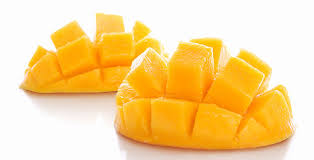
1. Dried mangoes/Osmotic Dehydration of Ripe Mango Slices
2. Mango juice
3. Mango concentrate
4. Mango jam
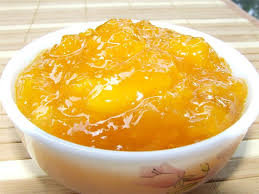
Jam is a product made by boiling fruit pulp with sufficient quantity of sugar to a reasonably thick consistency
FPO specifications
TSS : 68 - 70 %
5. Mango jelly
6. Mango Candy
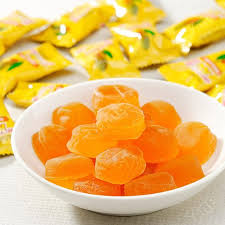
7.Mango squash
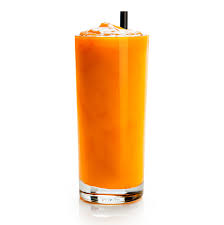
8. Canned Mango Slices
9. Canned mango pulp
FPO Specifications for Canned Mango Products
Head space in the can shall be in the range of 0.3 to 0.5 cm
The drained weight of the fruit shall not be less than 50 per cent and the fruit should be firm
No preservatives shall be added
No artificial colour shall be present
The can shall not show any positive pressure at sea level and shall not show any sign of bacterial growth when incubated at 37ºC for a week.
10. Mango leather
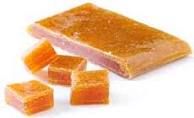
Made out of mango pulp mixed with concentrated sugar solution and sun dried. Can be consumed in any season as it can be preserved for a long period of time.
Technologies Available
Post Harvest Technology Centre, TNAU, Coimbatore.
Home Science College and Research Institute, TNAU, Madurai.
Processing Department of KAU
3. By Products of Mango Processing
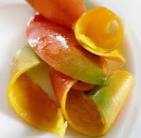
1. Juice from pomace
The pulp along with peel is treated by the pectinase enzyme to degrade the pectin molecules present. SO2 (100 ppm) is added to avoid the undesirable microorganisms that carry out fermentation. Juice obtained is concentrated and is used in confectionaries, used as a syrup in canning of mango slices. When juice is used as syrup, there may be astringent taste due to presence of tannins which lead to undesirable flavour. Thus chemical treatment is given to remove tannins.
2. Kernel flour
3. Oil / fat from kernel
This oil has a medicinal value, used in and medicines. The fat can be used as an edible oil purpose being slightly modified and also in soap industries.The mango kernel oil contain high amount of stearic acid (43%- used in soap manufacturing), oleic acid (44%) but devoid of linoleic acid
4. Starch from kernel
Used in sizing operations in textile and clothing industries, for washing clothes, in adhesives, paper and fermentation
5. Pectin from peel
6. Biogas production from peel
Anaerobic fermentation of waste
Provides energy as methane (biogas)
Protects environment by reducing the pollution
Yields good quality spent solids (slurry) which can be used as a manure
Growing microbial cells (yeast, fungi, bacteria) as a source of proteins on mango waste
Serves as a protein supplement for human beings or as an additive to improve product functionality
Microbial biomass could also be used as animal feeds or for recovery of pigments from fruits
Value addition